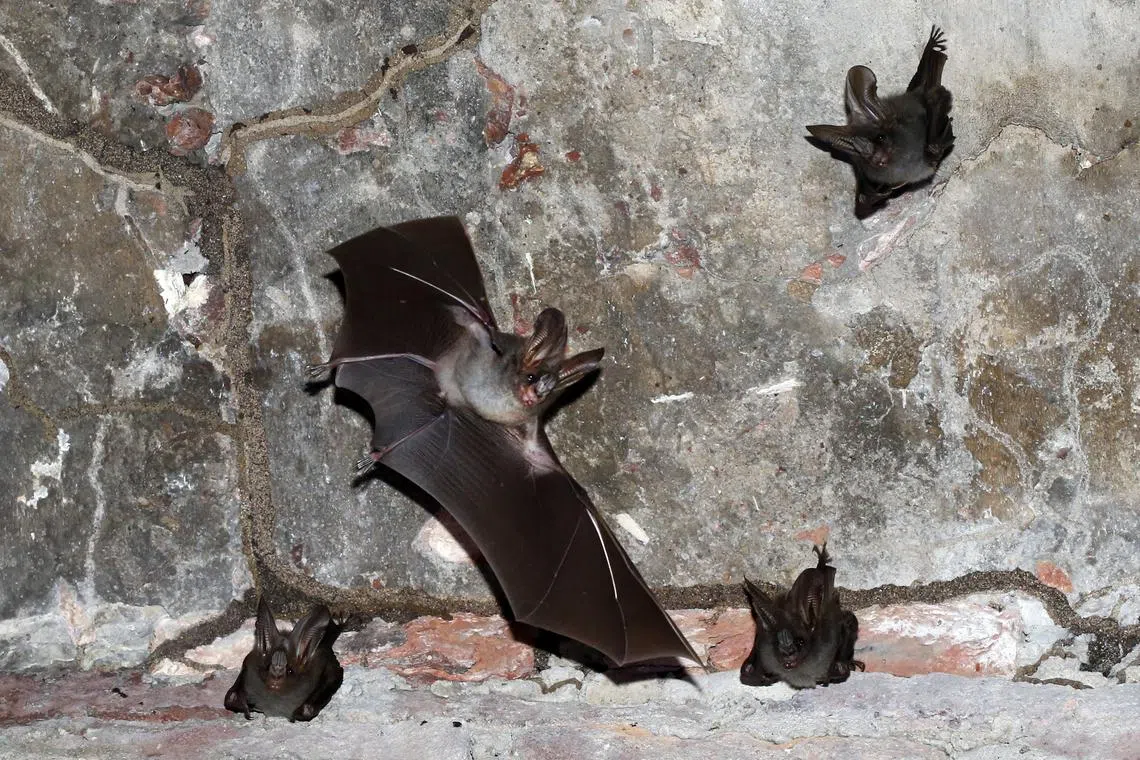Boosting research for defence against diseases spread from animals to humans
Sign up now: Get ST's newsletters delivered to your inbox

The risk of outbreaks of zoonotic diseases has been increasing in recent years.
PHOTO: ST FILE
Follow topic:
SINGAPORE – With climate change, deforestation and the cross-border trade of animals increasing the risk of animals spreading diseases to humans and sparking pandemics, Singapore is boosting research into understanding the links between human, animal and environmental health.
The National Parks Board (NParks) will be calling for research proposals later in 2024 under its new Biosurveillance Research Programme to understand these linkages and come up with innovative approaches to detect and prevent future outbreaks.
During a debate on its budget in March,
Research proposals could centre around studies that analyse the genetic materials of pathogens from environmental samples such as air, water, soil and insect samples without needing to capture and sample the target animals themselves, according to NParks.
“In addition to identifying the presence of a pathogen causing disease in animals, genomic analysis can potentially allow us to identify the source of the pathogen, determine its evolution and whether there are genetic markers that make them more virulent,” said Dr Chua Tze Hoong, group director of veterinary health at NParks.
In recent years, the risk of outbreaks of zoonotic diseases has been increasing, added Dr Chua.
This could be due to factors such as climate change, converting natural habitats to urban areas, increased interactions between humans and animals and increased travel and trade of disease-carrying animals, he said.
For example, when smuggled pets of unknown health status evade biosecurity and sanitary controls and come into contact with the community, the risk of diseases being transmitted from animals to humans increases.
Hence, the research programme also aims to look into how various drivers, such as animal trade, climate change and urbanisation, may influence the movement of these animal hosts and lead to zoonotic disease risk and transmission to people, through modelling and observational studies.
Understanding these interactions will inform efforts to address these drivers and mitigate transmission risks.
Examples of “priority diseases” the programme intends to study include avian influenza, rabies and tick-borne diseases and leptospirosis – a bacterial infection that can be contracted by dogs after they come into contact with the urine of infected animals such as rodents.
The research programme will also inform strategies for zoonotic disease mitigation, such as through land-use planning, habitat restoration and targeted animal management measures.
Attention to research on zoonotic disease prevention has also been growing globally.
An international team of 25 scientists, led by an expert from Cornell University, proposed a road map in a paper published in March for how to prevent the next pandemic by conserving natural areas and promoting biodiversity.
Currently, most attention and funding is allocated to outbreak detection and developing vaccines and treatments for diseases. However, less attention has been given to reducing the likelihood of transmission from animals to humans in global conversations, policy guidance and practice, said the paper’s authors.
Based on insights from two other studies in 2022, the paper’s authors explained that when bats lose their natural habitats and winter food sources, their large populations splinter, and they migrate in small groups to agricultural and urban areas for food and shelter, increasing the risk of spreading viruses to people.
In addition, bats become more stressed with inadequate food sources. This causes them to shed more virus in their urine, spreading the fatal Hendra virus to horses, which then spread the virus to people.
But when natural habitats can provide adequate food, especially in winter months, the bats return to these habitats, gather in large numbers, and stop shedding viruses.
From such case studies, the team proposed protecting where animals roost or aggregate, as their natural habitats act as buffers between people and wildlife, limiting chances of disease transmission.
“There are trillions of microbes in nature, but we rarely actually get sick, because there are many, many barriers between us and new pathogens,” said Dr Raina Plowright, a professor in the Department of Public and Ecosystem Health at Cornell University, and first author of the paper, Ecological Countermeasures To Prevent Pathogen Spillover And Subsequent Pandemics.
According to the paper, published in the journal Nature Communications in March, excess heat and extreme climate events can also intensify processes that drive the spread of diseases.
Climate change has also changed when plants usually bear fruits and flowers, increasing stress and driving wildlife to move into agricultural and urban areas with more humans, highlighting the importance of mitigating climate change through conserving natural habitats.
The team, led by Dr Plowright, also proposed an Intergovernmental Panel for Pandemics – an agency that will regularly assess and synthesise data on pandemic prevention, preparedness and response.
The panel should also develop clear metrics to evaluate the effectiveness of any programme that aims to mitigate pandemic risk through the conservation and restoration of nature.

